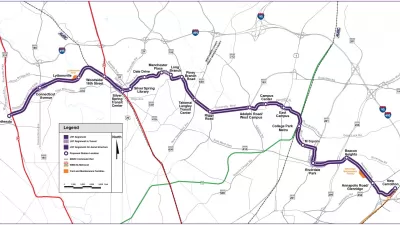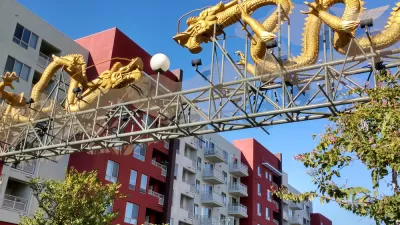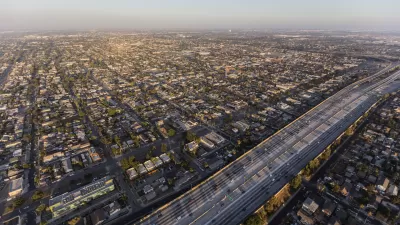As the Los Angeles metro area expands its transit options, transit-oriented development is following suit. In some neighborhoods, lower-income residents are being displaced.

Judging from elections in November and March, L.A. residents seem generally in favor of transit and development. Nate Berg writes about how the city's rail-building spree, while beneficial in many ways, also exacts a social cost.
Pulling from UCLA research, Berg discusses the complexities of displacement, which some development boosters have a tendency to gloss over. "Much of this displacement is happening in neighborhoods surrounding the transit stations in L.A.'s growing public transportation network. Where transit grows, development and displacement seem to follow."
"'I think that we now know there is a dark side of TOD,' says [UCLA planning professor Anastasia] Loukaitou-Sideris. 'That does not mean we should abandon designing TODs, but it definitely means that we really need to safeguard some of these communities.'"
In some places, neighborhoods have effectively organized to limit the scale of development around rail lines, another sensitive point after the city's vitriol-laden fight over the defeated anti-development Measure S.
Berg points to another recent ballot item that may help. "Proposition JJJ, approved by Los Angeles voters in November 2016, requires that new development projects set aside a certain number of affordable housing units and incentivizes the creation of affordable units near transit stations and corridors."
FULL STORY: Neighborhood Watching

Alabama: Trump Terminates Settlements for Black Communities Harmed By Raw Sewage
Trump deemed the landmark civil rights agreement “illegal DEI and environmental justice policy.”

Study: Maui’s Plan to Convert Vacation Rentals to Long-Term Housing Could Cause Nearly $1 Billion Economic Loss
The plan would reduce visitor accommodation by 25% resulting in 1,900 jobs lost.

Planetizen Federal Action Tracker
A weekly monitor of how Trump’s orders and actions are impacting planners and planning in America.

Wind Energy on the Rise Despite Federal Policy Reversal
The Trump administration is revoking federal support for renewable energy, but demand for new projects continues unabated.

Passengers Flock to Caltrain After Electrification
The new electric trains are running faster and more reliably, leading to strong ridership growth on the Bay Area rail system.

Texas Churches Rally Behind ‘Yes in God’s Back Yard’ Legislation
Religious leaders want the state to reduce zoning regulations to streamline leasing church-owned land to housing developers.
Urban Design for Planners 1: Software Tools
This six-course series explores essential urban design concepts using open source software and equips planners with the tools they need to participate fully in the urban design process.
Planning for Universal Design
Learn the tools for implementing Universal Design in planning regulations.
Caltrans
Smith Gee Studio
Institute for Housing and Urban Development Studies (IHS)
City of Grandview
Harvard GSD Executive Education
Toledo-Lucas County Plan Commissions
Salt Lake City
NYU Wagner Graduate School of Public Service





























